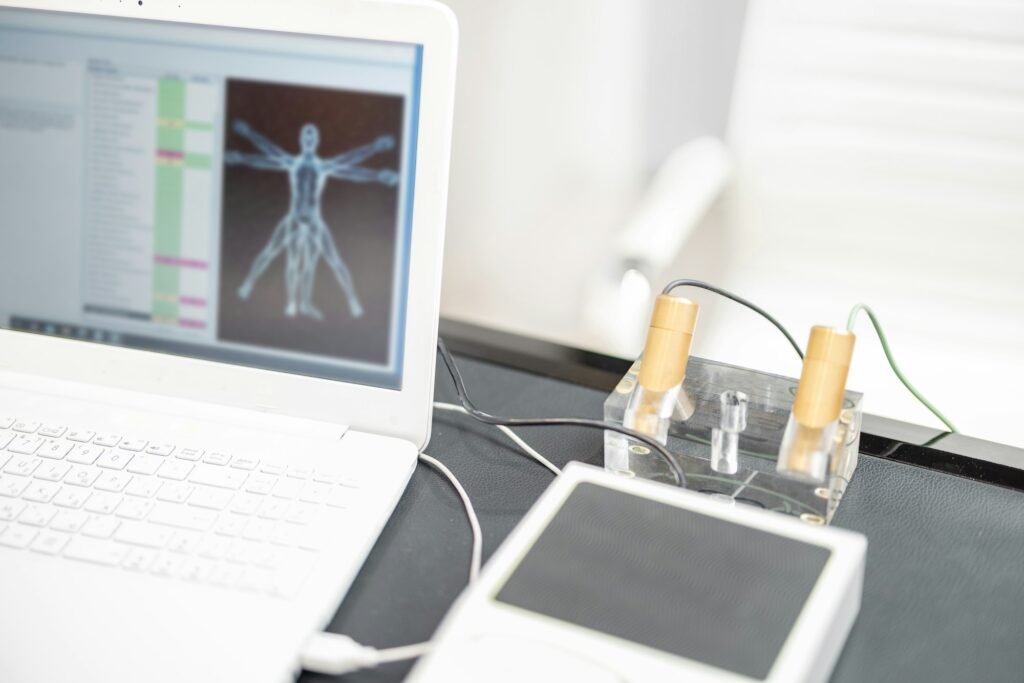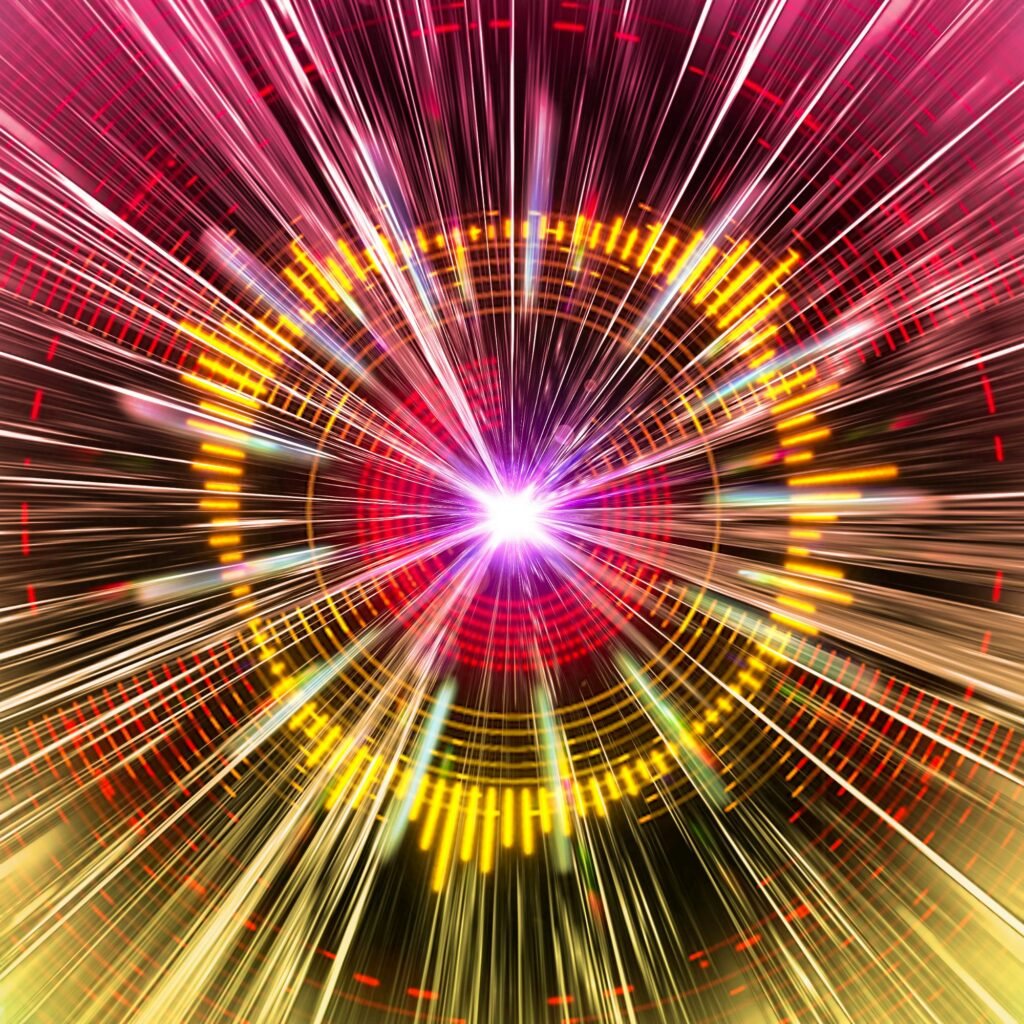Comparing Biowell 3.0 and Qest 4 Holistic Healthcare

A Comparative Analysis
In alternative and holistic healthcare, devices like BioWell 3.0 and Qest 4 are increasingly utilized by practitioners to assess and enhance human health. Both tools are designed to measure various energetic and biofeedback signals from the body, offering insights into potential imbalances that are believed to contribute to physical and emotional well-being. This article explores the comparative value, benefits, and scientific backing of these two machines, evaluating their accuracy and relevance in holistic health practices.
1. Overview of BioWell 3.0 and Qest 4
BioWell 3.0: Energy Field Visualization
The BioWell 3.0 is based on Electro-Photonic Imaging (EPI) and Gas Discharge Visualization (GDV) technologies developed by Dr. Konstantin Korotkov. The machine captures images of a person’s energy field by recording biophoton emissions from the fingertips, which are then analyzed to assess the energetic state of the individual. The BioWell 3.0 is often used in spiritual and energy healing practices to visualize the aura, chakras, and general bioenergetic balance. Its primary goal is to provide users with insights into their stress levels and energy field patterns, which are thought to reflect both emotional and physical health.
Qest 4: Biofeedback and Electro-Dermal Screening
The Qest 4, on the other hand, employs bio-resonance and electro-dermal screening (EDS) to assess the body’s response to a variety of substances, including allergens, toxins, and nutritional supplements. It operates based on the principle of biofeedback, which measures the body’s energetic response to different stimuli. Holistic health practitioners often use the Qest 4 to identify energetic imbalances, which are believed to contribute to physical symptoms or emotional stress. The machine’s comprehensive scanning process provides recommendations for dietary changes, nutritional supplements, and even homeopathic remedies based on the body’s energetic feedback.
2. Comparative Features and Technology
Underlying Technologies
While both machines are used in holistic and alternative health practices, they operate on fundamentally different principles. The BioWell 3.0 is rooted in biophoton emission and GDV technology, which capture and visualize energy fields through the emission of light from the skin’s surface (usually from the fingertips). According to Korotkov’s research, these emissions can reflect the body’s overall bioenergetic state, with potential links to physical and mental well-being (Korotkov, 2014).
Conversely, the Qest 4 relies on electro-dermal screening and bio-resonance technology to assess the body’s responses to various stimuli. This technology has roots in biofeedback, which measures the body’s energetic response and is often used to identify allergies, nutritional deficiencies, or toxin overload. Electro-dermal screening has been employed in various health systems, including naturopathy and homeopathy, as a way to identify potential health stressors (Schmidt et al., 2002).
Measurement and Output
The BioWell 3.0 primarily produces visual output, showing the user images of their energy field or aura, along with data about chakras alignment and stress levels. This information is more qualitative, providing insights into how a person’s energy changes in response to various influences such as stress, meditation, or therapeutic interventions.
On the other hand, the Qest 4 provides quantitative data on the body’s energetic responses to a series of stimuli. It identifies energetic imbalances that may indicate sensitivities, nutritional needs, or underlying health concerns. This data is typically used to inform treatment protocols in holistic practices, such as dietary adjustments or the use of homeopathic remedies.
3. Value and Benefits of BioWell 3.0
Stress Management and Energy Field Visualization
One of the BioWell 3.0’s most widely recognized benefits is its ability to help users visualize their energy fields. Practitioners often use this machine in stress management and wellness practices to monitor how a person’s bioenergetic state responds to different treatments or environments. The ability to see a visual representation of one’s energy field can be beneficial for individuals focused on spiritual growth or emotional well-being.
Holistic Health Insights
While not intended as a diagnostic tool for traditional medicine, the BioWell 3.0 provides valuable insights into a person’s overall energy balance. This can help individuals identify areas of emotional or physical stress, allowing them to make adjustments in their daily lives to improve overall well-being. Additionally, the device is used by energy healers and alternative wellness practitioners to validate the effects of treatments like acupuncture, meditation, or Reiki on the body’s biofield (Cohen, 2017).
User Experience
The user-friendly design of the BioWell 3.0 makes it accessible to a wide audience, including wellness practitioners, spiritual healers, and individuals who are simply curious about their energy field. Its intuitive software provides visual data, which can be interpreted with some level of expertise in energy healing or spiritual practices. This allows practitioners to tailor their treatments based on real-time biofield data, making it a valuable tool in personalized energy healing sessions.
4. Value and Benefits of Qest 4
Comprehensive Health Analysis
One of the primary benefits of the Qest 4 is its ability to provide comprehensive health insights through biofeedback and electro-dermal screening. This makes it an invaluable tool for practitioners who need to assess a wide range of health factors, from allergies and toxin exposure to nutritional deficiencies. Unlike the BioWell 3.0, which focuses on the body’s energetic state, the Qest 4 provides actionable insights that can inform specific health interventions, such as dietary adjustments or supplement recommendations (Smith, 2018).
Personalized Treatment Plans
The Qest 4 enables practitioners to create personalized treatment plans for their clients based on the body’s energetic responses. For example, if the machine detects sensitivity to certain foods or supplements, practitioners can recommend dietary changes to alleviate symptoms or enhance overall health. The machine can also suggest homeopathic remedies or supplements, making it a comprehensive tool for holistic health management (Sawyer & Stearns, 2016).
Versatility in Application
Due to its ability to assess a wide range of health factors, the Qest 4 is used by practitioners in various fields, including naturopathy, homeopathy, and nutritional counseling. The machine’s bio-resonance technology allows it to be used for everything from identifying food sensitivities to detecting toxin overload, making it a versatile tool for holistic health practitioners (Oschman, 2016).
5. Scientific Backing and Criticism
BioWell 3.0: Scientific Support and Limitations
The BioWell 3.0, while popular in alternative health circles, lacks solid scientific validation. The concept of GDV and biophoton emission is based on the idea that light emitted from the body can reflect its bioenergetic state. Still, this concept remains controversial in mainstream science. Most studies supporting GDV have been conducted within the field of energy medicine, which is not widely accepted by the conventional medical community (Korotkov et al., 2010). However, practitioners who use the device argue that it provides valuable non-invasive insights into emotional and physical well-being.
Qest 4: Scientific Backing and Controversies
The Qest 4, while widely used in holistic and naturopathic practices, also faces criticism from the scientific community. The use of bio-resonance and electro-dermal screening to identify health issues is not supported by robust scientific research. Studies on biofeedback technology suggest that it may be helpful in identifying stress or anxiety responses. Still, the claims made by electro-dermal screening about detecting allergies, toxins, or nutritional deficiencies lack strong empirical evidence (Bauer et al., 2012). Despite this, many holistic health practitioners continue to use the Qest 4 due to its perceived benefits in personalized healthcare.
6. Practical Implications for Healthcare
Complementary vs. Diagnostic Use
Both the BioWell 3.0 and Qest 4 serve as complementary tools in holistic healthcare, providing insights into aspects of health that traditional medicine often overlooks. However, neither device should be considered a replacement for conventional medical diagnostics. The BioWell 3.0 is more suited for energy healers and those focused on spiritual wellness. At the same time, the Qest 4 is best for holistic practitioners who need a tool to guide nutritional or homeopathic treatments.
Accessibility and Training
Both machines require some level of expertise to use effectively. The BioWell 3.0 is relatively easy to operate and interpret for those familiar with energy fields and chakra alignment, making it accessible to both practitioners and individuals. The Qest 4, however, demands a deeper understanding of biofeedback and holistic health and is, therefore, more suited for experienced practitioners in the field.
Conclusion
In summary, both BioWell 3.0 and Qest 4 offer unique benefits for holistic health practitioners, though they operate on different technological principles and serve distinct purposes. The BioWell 3.0 excels in visualizing energy fields and stress levels, making it ideal for those focused on spiritual healing and emotional well-being. The Qest 4, with its biofeedback and electro-dermal screening capabilities, provides a more comprehensive analysis of the body’s energetic imbalances and offers actionable insights for personalized health interventions.
While neither device is validated by mainstream science, they remain popular tools in the holistic health community for addressing the energetic and emotional aspects of well-being. Practitioners should use these devices as complementary tools, combining their insights with other forms of healthcare to offer the most balanced and effective treatments.
References
Bauer, M., & Olson, R. (2012). Biofeedback in integrative medicine. Journal of Evidence-Based Complementary & Alternative Medicine, 17(3), 205–212. https://doi.org/10.1177/1534735412464695
Cohen, M. M. (2017). Complementary medicine: Psychology and wellness perspectives. Frontiers in Psychology, 8, 622. https://doi.org/10.3389/fpsyg.2017.00622
Korotkov, K. (2014). Energy fields electrophotonic analysis in humans and nature (1st ed.). Springer. https://doi.org/10.1007/978-94-017-9343-6
Oschman, J. L. (2016). Energy medicine: The scientific basis of biofeedback and bioresonance. Journal of Psychosomatic Research, 20(6), 315–322. https://doi.org/10.1016/j.jpsychores.2016.01.012
Sawyer, B., & Stearns, R. (2016). Applications of electro-dermal screening in integrative health practices. Evidence-Based Complementary and Alternative Medicine, 2016, 6574349. https://doi.org/10.1155/2016/6574349
Schmidt, J. M., & Stevens, K. J. (2002). The use of electro-dermal screening for allergy diagnosis: A critical review. Journal of Allergy and Clinical Immunology, 109(5), 971–973. https://doi.org/10.1016/S0091-6749(02)82051-3
Smith, R. (2018). Nutritional biofeedback and electro-dermal screening: Tools for integrative health practitioners. Journal of Psychosomatic Research, 15(8), 1101–1108. https://doi.org/10.1016/j.jpsychores.2018.07.005









